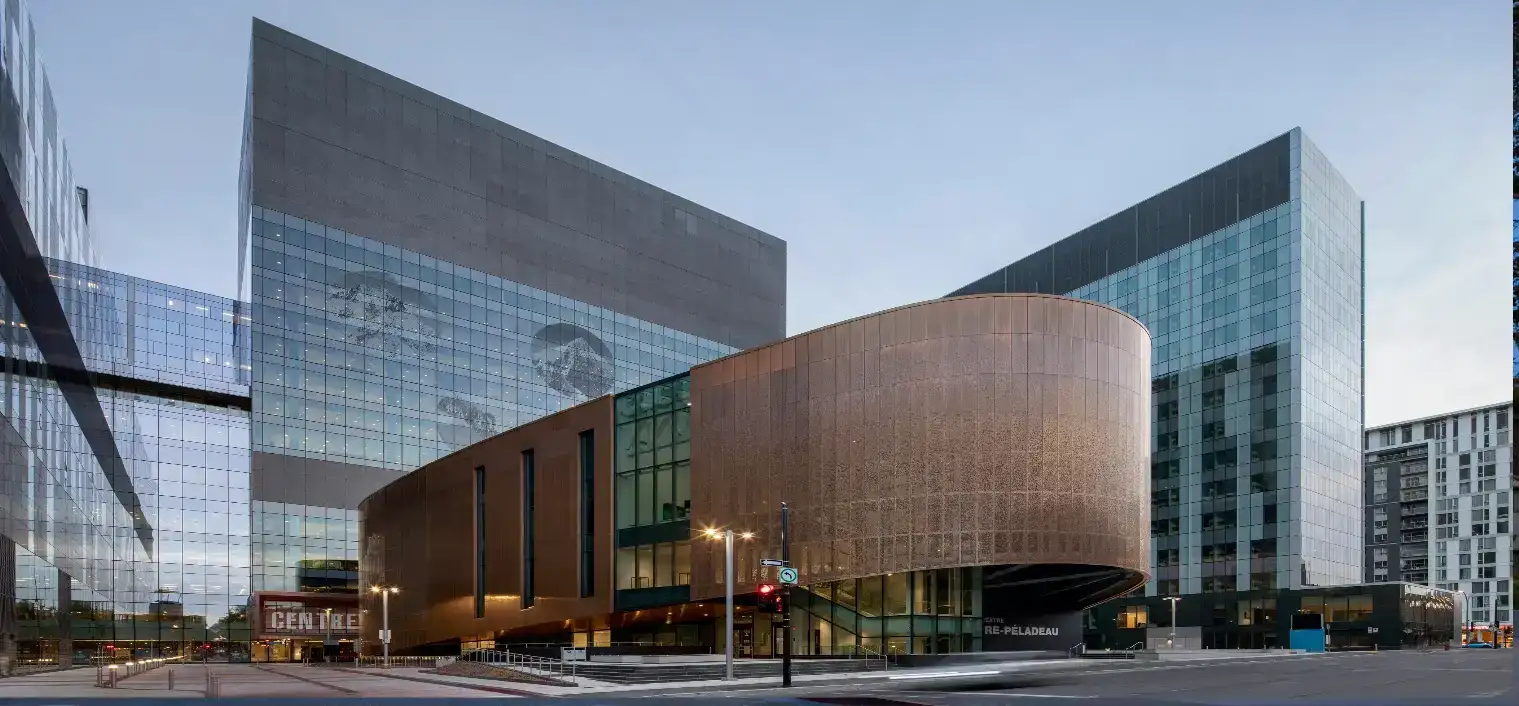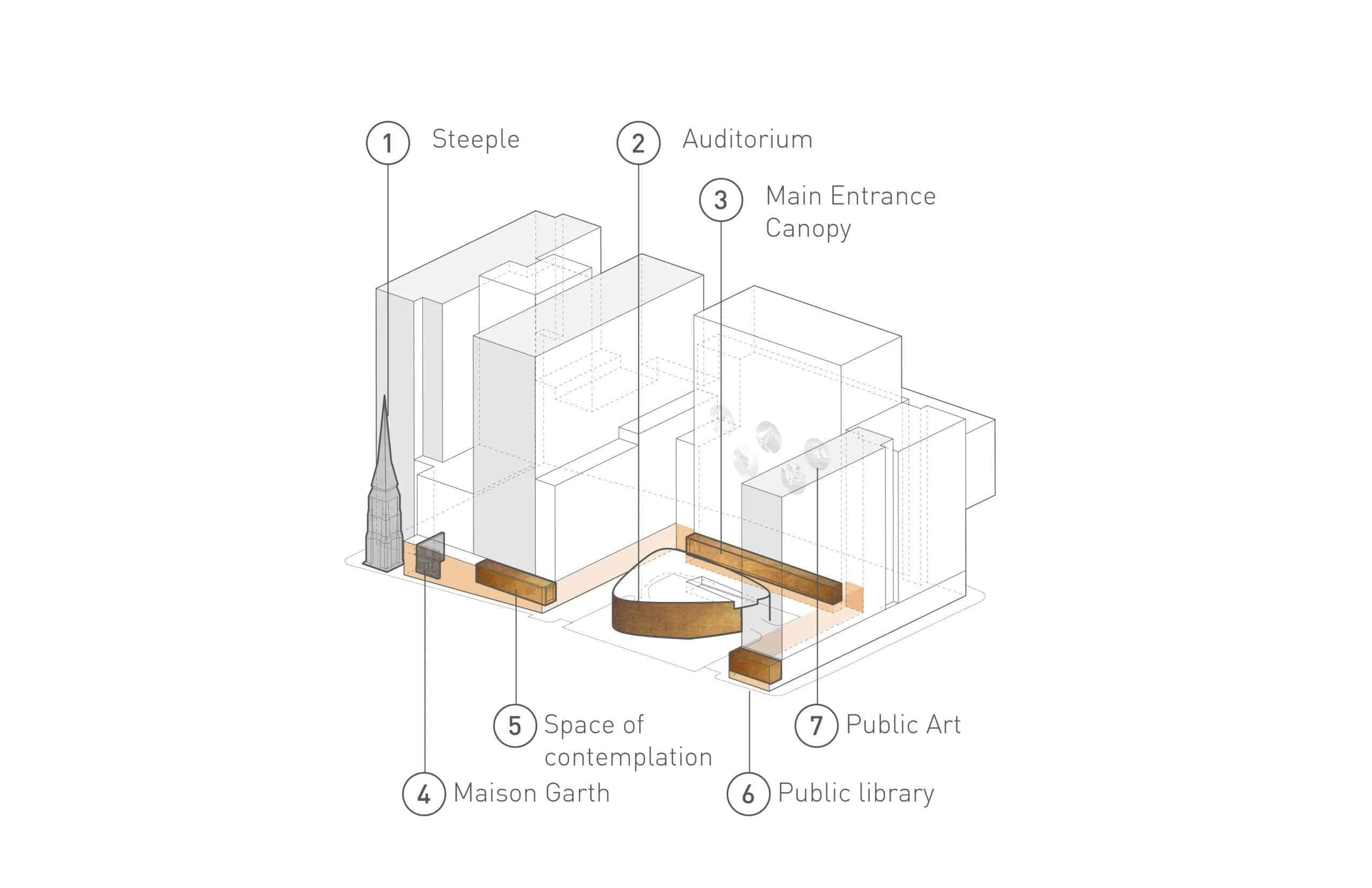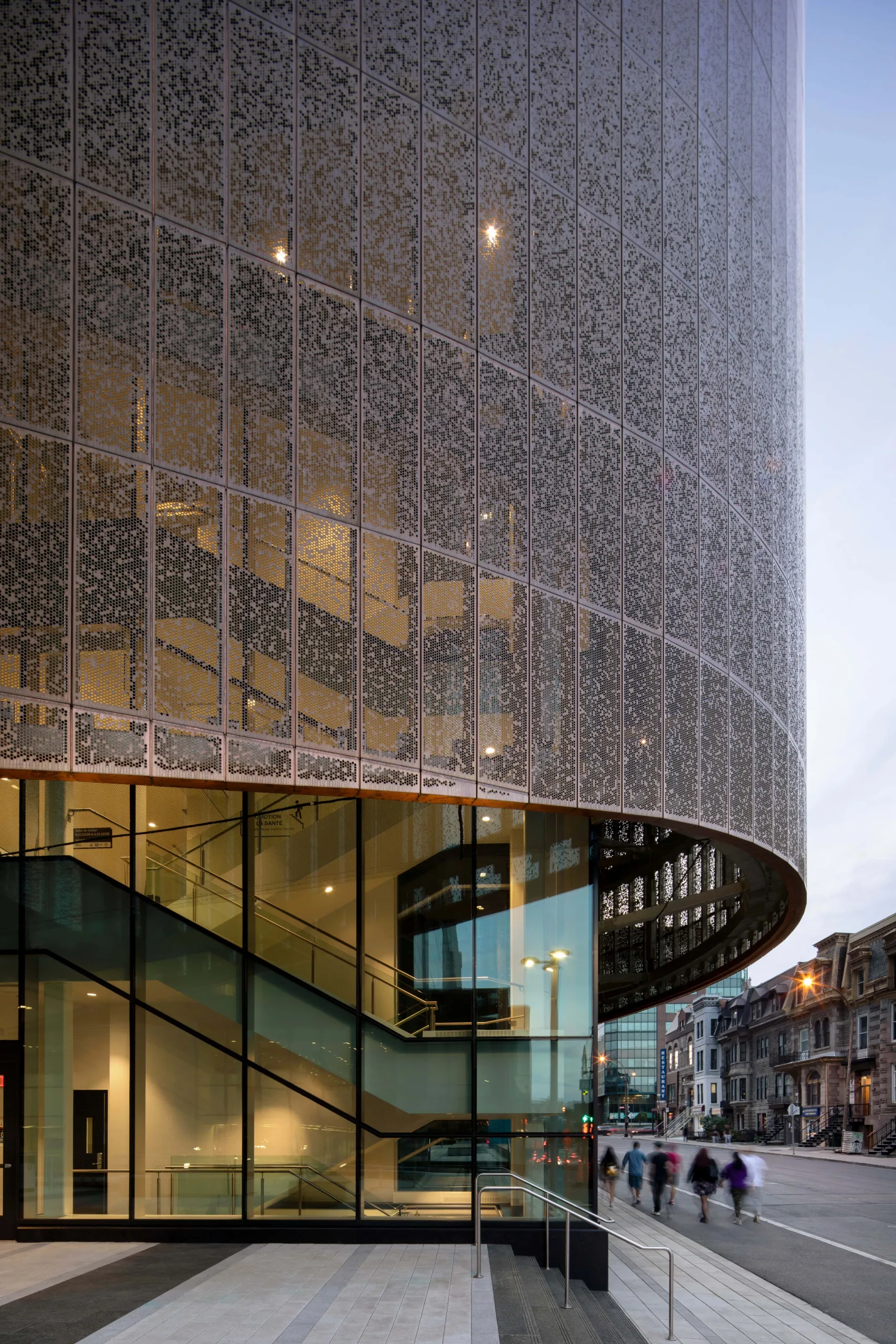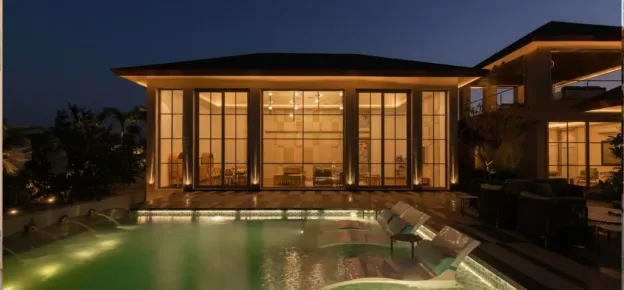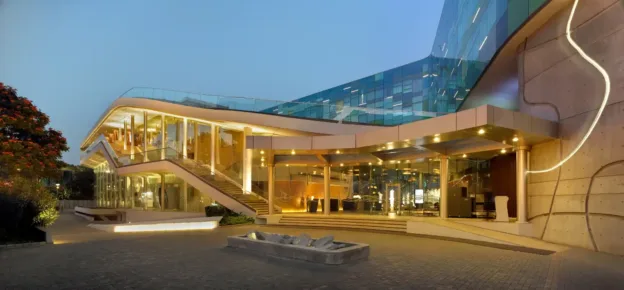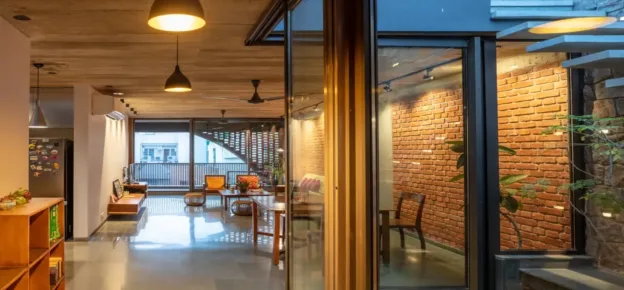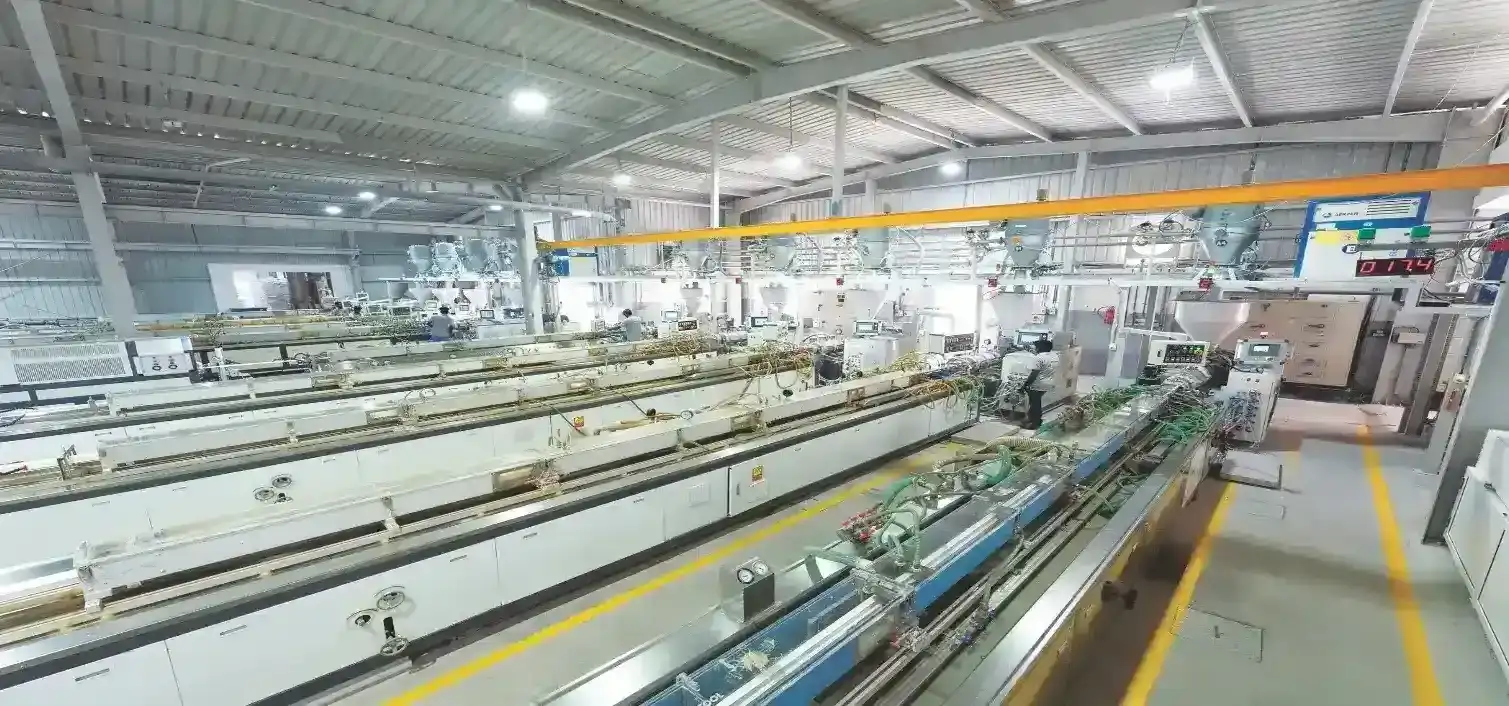The Centre hospitalier de l’Université de Montréal (CHUM) stands as one of North America’s largest healthcare construction projects, occupying over 3 million square feet across a full city block in downtown Montreal. Designed to respond sensitively to its urban context, CHUM’s massing is articulated through a “three towers” concept, each housing distinct functions – patient beds, ambulatory care, and medical offices – while maintaining a cohesive architectural language. The buildings closest to the street scale down to relate to the surrounding mid-rise fabric, and the central courtyard serves as a civic anchor, offering public space and visual relief within the dense urban grid.
Prior to the construction of the new complex, the site was home to an abandoned church and the Garth House, a modest structure that once housed the church custodian. In a gesture of architectural continuity and cultural preservation, the church steeple was retained and now defines a prominent corner of the site. Additionally, two façades of the Garth House were carefully integrated into the main interior hall, visible through CHUM’s transparent curtain wall – creating a meaningful dialogue between past and present.
Copper plays a defining role in CHUM’s architectural identity, cladding signature elements such as the 500-seat Pierre-Péladeau auditorium and the sculptural pedestrian bridge known as the Passerelle. These copper interventions echo the materiality of Montreal’s historic institutional buildings and contribute to the project’s LEED® Silver sustainability goals. The Passerelle, which connects the main hospital to a neighbouring logistics building across Sanguinet Street, was conceived as a “floating lantern” – a perforated copper volume that filters daylight by day and glows from within at night, enriching both the pedestrian and urban experience.
Technically, the Passerelle presented a series of challenges that demanded innovative façade solutions. The bridge spans between two independent structures, requiring a pivot connection on one end and a sliding connection on the other to accommodate differential movement. Its sloped floor had to be reconciled with a level decorative shroud, and the underbelly – highly visible from the street – was designed to appear visually light while integrating concealed lighting and managing snow and rain runoff. Lightweight stainless steel supports and hidden fastening systems preserved the purity of the copper form, while addressing long-term maintenance and copper runoff concerns. A 3D printed model was instrumental in refining these details and coordinating construction within a limited street closure window.
Elsewhere on the CHUM campus, envelope strategies were tailored to building function and performance requirements. The main clinical building employed a unitised curtain wall system for efficient installation and a sleek, opaque aesthetic using metal and glass spandrel panels. In contrast, the adjacent A’ building utilised a cold-formed metal framing (CFMF) system, requiring meticulous detailing to align vision glass with adjacent metal panels and maintain a flush façade. Achieving this alignment while meeting stringent thermal and condensation control standards involved a 4.25” offset between insulation and window centerlines, structural support beyond the framing, and allowances for building movement. Thermal modelling with THERM guided the integration of high-performance materials, including aerogel-based insulation blankets, to meet energy performance goals.
On the south elevation, a series of projected vertical aluminium fins adds a dynamic layer of pattern and shadow, animating the façade and reinforcing CHUM’s commitment to architectural richness and technical excellence. Together, these elements demonstrate how thoughtful façade design – rooted in both conceptual clarity and technical rigour – can elevate the experience of healthcare architecture in the heart of the city.
Quick Facts:
|
